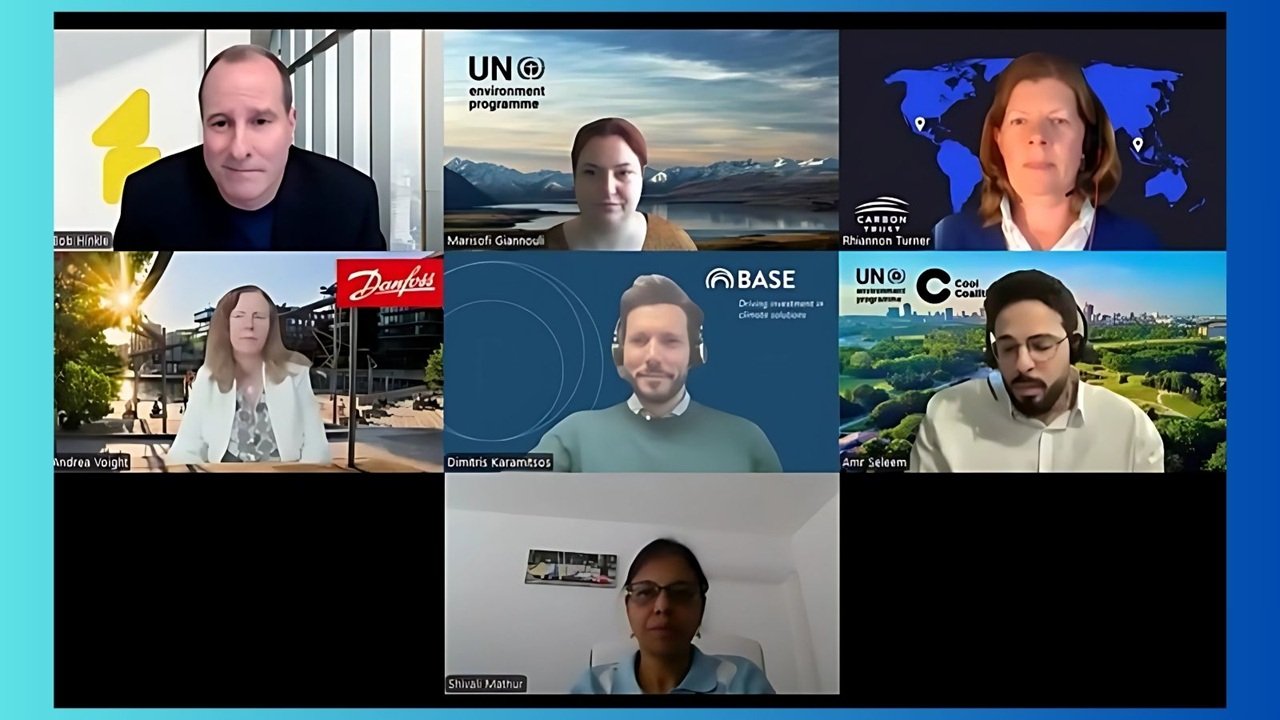UNEP Cool Coalition Highlights Cooling-as-a-Service Growth Potential
CaaS model offers capital-free access to efficient cooling across diverse sectors
On 2 April 2025, the UNEP Cool Coalition convened its latest Cool Talks webinar to explore Cooling-as-a-Service (CaaS), a model gaining global momentum as a low-carbon, performance-based alternative to traditional cooling ownership. Hosted by the Coalition’s Private Sector Working Group—co-led by Danfoss, Metrus Energy, and the Carbon Trust—the session gathered experts from finance, energy efficiency, and implementation to discuss how CaaS can accelerate equitable and sustainable access to cooling.
How CaaS Works
CaaS enables users to pay only for the cooling they consume, avoiding upfront capital investment. Costs are typically based on installed capacity, ton-hours, or other measurable outcomes. The model is delivered through Sustainable Energy Services Agreements (SESAs), which integrate engineering, procurement, construction, and long-term maintenance into a single contract.
“CaaS offers a compelling response by removing upfront capital barriers, aligning business incentives with energy efficiency, and enabling a shift from ownership to service delivery,” said Amr Seleem, Country Engagement and Policy Lead at the UNEP Cool Coalition.
Metrus Energy President and CEO Bob Hinkle emphasized CaaS’s alignment with Energy-as-a-Service models. “CaaS unlocks private capital to scale efficient, low-carbon cooling projects that improve air quality and reduce GHG emissions through performance-based contracts,” he said.
Operational and Financial Benefits
Speakers highlighted how the CaaS model supports organizations aiming to decarbonize operations by shifting from capital expenditures (CapEx) to predictable operating expenses (OpEx). “CaaS allows customers to plan their OpEx with certainty,” noted Dimitris Karamitsos of the Basel Agency for Sustainable Energy (BASE).
Shivali Mathur of Amberside Advisors compared the model to ridesharing: “CaaS is like Uber—you don’t own the system, you pay to use it when you need it.” She outlined financing approaches such as blended finance, joint public-private Special Purpose Vehicles (SPVs), golden-share models, and green bonds. Mathur cited Singapore’s infrastructure bond framework and the IFC’s Scaling Cooling Program as real-world enablers.
Case Studies: From Retail to Agriculture and Health
Andrea Voigt of Danfoss presented two CaaS deployments. In Denmark, supermarket chains access high-efficiency systems via a Danfoss–Aneo joint venture. In Kenya, Danfoss supports Danish Church Aid’s Loss to Value project, where cold rooms are provided to farming cooperatives through a service model, fostering long-term responsibility.
Rhiannon Turner of the Carbon Trust highlighted Kenya’s SokoFresh initiative, where solar-powered mobile cold storage hubs enable farmers to pay fees post-sale. This model increased incomes by 20–40% and cut food waste to as low as 2%. However, Turner noted its limitations: “If the model doesn’t address a real user problem, it won’t succeed.”
She also described Drop Access’s VaxaBoxes—solar-powered refrigeration units for vaccines offered at $4 per day. Turner flagged user education as essential to overcoming perceptions of CaaS as “a perpetual lease.”
Financial Structures and Environmental Impact
Speakers addressed investment models, noting that SPVs are commonly used to isolate financial risk and attract capital. “The UK is piloting golden-share models and concession-based arrangements,” said Mathur, pointing to new heat sector regulations as a driver of investor confidence.
Voigt addressed refrigerant concerns, stating, “If this can be done with low-GWP refrigerants, that’s ideal. But our first responsibility is to ensure systems are in place and used responsibly.”
Karamitsos concluded that CaaS also shifts provider incentives. “Instead of profiting from selling spare parts, service providers are incentivized to maximize system performance over time. That’s a shift toward the circular economy.”
Closing the event, Seleem encouraged continued collaboration to scale sustainable cooling. “This is a model that is still new to the cooling space but full of potential,” he said.
